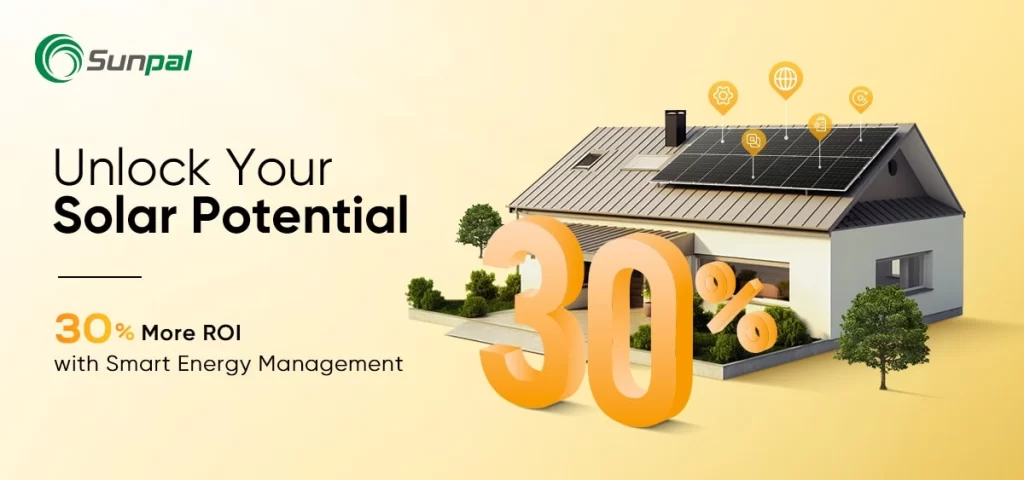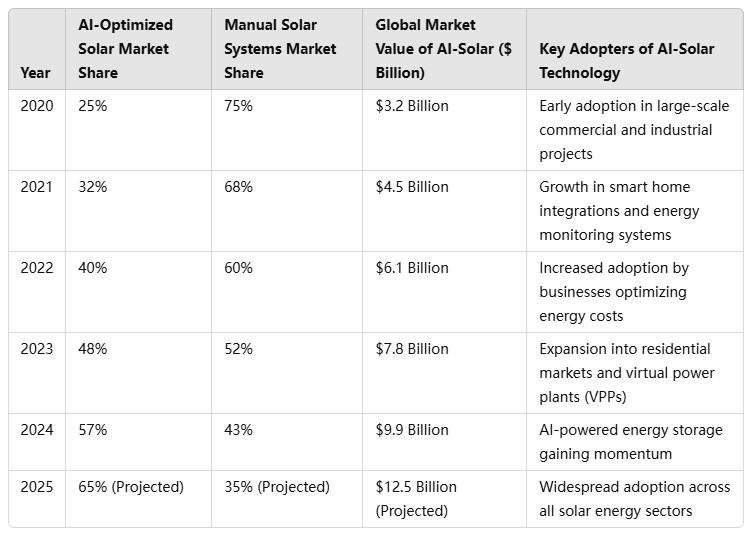
Are you truly getting the most out of your solar investment? While discussions around solar energy often focus on panel efficiency, battery capacity, and installation costs, an essential but often overlooked factor can significantly boost financial returns: Solar Energy Management Systems (SEMS).
These intelligent systems optimize power flow, minimize energy waste, and improve electricity management—leading to up to 30% higher ROI on solar investments.
With the demand for smarter solar solutions growing, homeowners, businesses, and investors must recognize how SEMS can turn standard solar setups into high-performing energy assets.
This article explores the critical role of SEMS, their financial and technical benefits, and why adopting intelligent energy management is a game-changer for anyone using solar power.
What Are Solar Energy Management Systems?
Beyond Panels and Batteries: The Smart Side of Solar
Solar panels and batteries generate and store electricity, but without intelligent management, a significant portion of this energy can be wasted or inefficiently distributed.
Solar Energy Management Systems (SEMS) function as the "brain" of a solar installation, ensuring power is optimally produced, stored, and used.
Key Components of SEMS
- Real-Time Energy Monitoring – Provides live data on power generation, battery charge levels, and household/business electricity consumption.
- AI-Based Optimization – Uses predictive algorithms to optimize solar energy use based on weather forecasts, energy demand, and electricity rates.
- Grid Interaction & Smart Load Balancing – Automatically determines when to draw power from the grid, store excess solar energy, or sell electricity back to the grid at peak rates.
- Remote Access & Automation – Allows users to control their energy flow via mobile apps or cloud-based platforms.
By integrating SEMS into a solar system, energy efficiency is maximized, ultimately leading to lower electricity bills and a higher return on investment.
How SEMS Unlock 30% Higher ROI on Solar Investments
Reducing Energy Waste
Traditional solar setups lack real-time intelligence, meaning excess energy is often wasted. With SEMS-powered automation, solar power is intelligently allocated, stored, or fed into the grid, reducing energy losses by up to 20-25%.
Lowering Electricity Bills
SEMS optimize energy consumption to minimize costs:
- Time-of-Use (TOU) Optimization – Stores energy when electricity prices are low and uses it when prices rise.
- Demand Charge Reduction – Helps businesses avoid expensive peak-hour charges by strategically using battery-stored energy.
- Enhanced Self-Consumption – Maximizes direct solar energy use, reducing grid dependency.
Maximizing Incentives & Grid Interaction
Many countries offer net metering programs, but SEMS enhance their benefits by strategically exporting power when buyback rates are highest. This increases revenue from solar-generated electricity while maintaining grid reliability.
Chart 1: ROI Comparison – Solar with vs. Without SEMS

The Role of AI & IoT in SEMS Adoption
Smart Optimization with AI
AI-powered SEMS predict energy demand and adjust power distribution in real time, increasing efficiency by up to 25%. Machine learning continuously improves system performance by analyzing past energy usage patterns.
Seamless Grid Interaction & Virtual Power Plants (VPPs)
- Smart Selling to the Grid – SEMS feed surplus power into the grid when electricity demand (and prices) are highest.
- Virtual Power Plants (VPPs) – SEMS enable homes and businesses to act as mini power plants, supporting the grid during peak demand.
- Grid Independence – Reduces reliance on traditional electricity providers by optimizing self-consumption.
Chart 2: Growth in AI-Optimized Solar Energy Systems

Who Benefits Most from SEMS?
Homeowners: Lower Bills, Greater Independence
- Reduces monthly electricity costs by up to 40%.
- Provides backup power during outages by intelligently managing battery storage.
Businesses: Reduced Demand Charges & Higher Profits
- Avoids high peak electricity rates by shifting energy loads efficiently.
- Reduces operational costs, improving business sustainability.
Investors: Higher Yields & Long-Term Gains
- Shortens payback periods for solar projects.
- Increases property values for buildings equipped with intelligent solar management.
Chart 3: SEMS Adoption by User Type

The Future of Solar Energy Management Systems
1. AI and Machine Learning Enhancements
Advanced AI algorithms will further refine energy forecasting, system efficiency, and grid interaction. Future SEMS will learn from individual usage patterns to predict optimal battery storage and power distribution with near-zero wastage.
2. Blockchain-Based Energy Trading
Decentralized blockchain platforms will enable peer-to-peer (P2P) solar energy trading, allowing homeowners and businesses to sell excess power directly to neighbors without relying on utility companies.
3. Next-Gen Battery Integration
Innovations in lithium-ion and solid-state batteries will improve storage efficiency, reducing degradation rates and energy loss. This will allow SEMS to work seamlessly with longer-lasting battery systems, ensuring greater energy security.
4. Smart Grid Expansion
Future SEMS will integrate with smarter, AI-driven power grids that automatically balance electricity supply and demand, preventing blackouts and voltage fluctuations. This will help stabilize the growing renewable energy sector.
5. Enhanced Cybersecurity for Energy Systems
As solar energy management systems become more connected, cybersecurity threats will increase. Future SEMS will incorporate blockchain encryption, AI-driven threat detection, and multi-layer authentication to protect energy infrastructure from hacking attempts.
Conclusion: The Smartest Solar Investment You Can Make
The era of passive solar energy use is over. Without SEMS, solar owners lose potential savings due to inefficient energy allocation and limited grid interaction.
At Sunpal, we offer cutting-edge Solar Energy Management Systems designed to maximize efficiency and profitability. Whether you’re looking for intelligent solar inverters, high-performance battery storage solutions, or integrated smart energy systems, our expert-designed products ensure you get the highest return on your solar investment.
Ready to take your solar energy to the next level? Explore www.sunpal-energy.com and find the best solution for your needs at Sunpal.
